What if the next Zelda dungeon was crafted not by Miyamoto, but by code? As artificial intelligence continues to evolve, game developers are increasingly turning to AI-powered tools to enhance, accelerate, and sometimes completely automate the level design process. This shift raises fascinating questions about creativity, efficiency, and the future of game development itself.
The intersection of AI and game design represents one of the most exciting frontiers in interactive entertainment. From procedurally generated worlds to machine learning algorithms that adapt to player behavior, AI is reshaping how games are made and experienced. But can an algorithm truly capture the magic of human-crafted experiences?
The AI Game Design Toolkit: Current Technologies
The landscape of AI tools for game level creation has expanded dramatically in recent years. These technologies range from relatively simple procedural generation algorithms to sophisticated machine learning models that can analyze and replicate design patterns.
Procedural Content Generation (PCG)
PCG algorithms use mathematical rules and randomization to create game content automatically. These systems can generate everything from terrain and dungeons to item placements and enemy encounters.
Tools like Unity’s ProBuilder and Unreal Engine’s procedural landscape systems allow developers to establish parameters and let algorithms handle the heavy lifting of environment creation.
Machine Learning Models
More advanced AI systems use machine learning to analyze existing game levels, identify patterns, and generate new content that follows similar design principles. These models can “learn” what makes a level engaging, challenging, or aesthetically pleasing.
NVIDIA’s GameGAN and OpenAI’s GPT models have demonstrated the ability to understand game mechanics and generate appropriate level designs based on training data.
Popular AI Game Design Tools
- WaveFunctionCollapse – An algorithm that generates textures and levels based on example inputs
- Ludo.ai – A comprehensive AI platform for game ideation, concept development, and asset creation
- ML-Agents for Unity – Allows games to train neural networks through player interactions
- ANGELINA – An AI system that can design complete games with minimal human input
- Promethean AI – Assists artists in creating 3D environments through natural language commands
Human Creativity vs. AI Efficiency: The Level Design Showdown
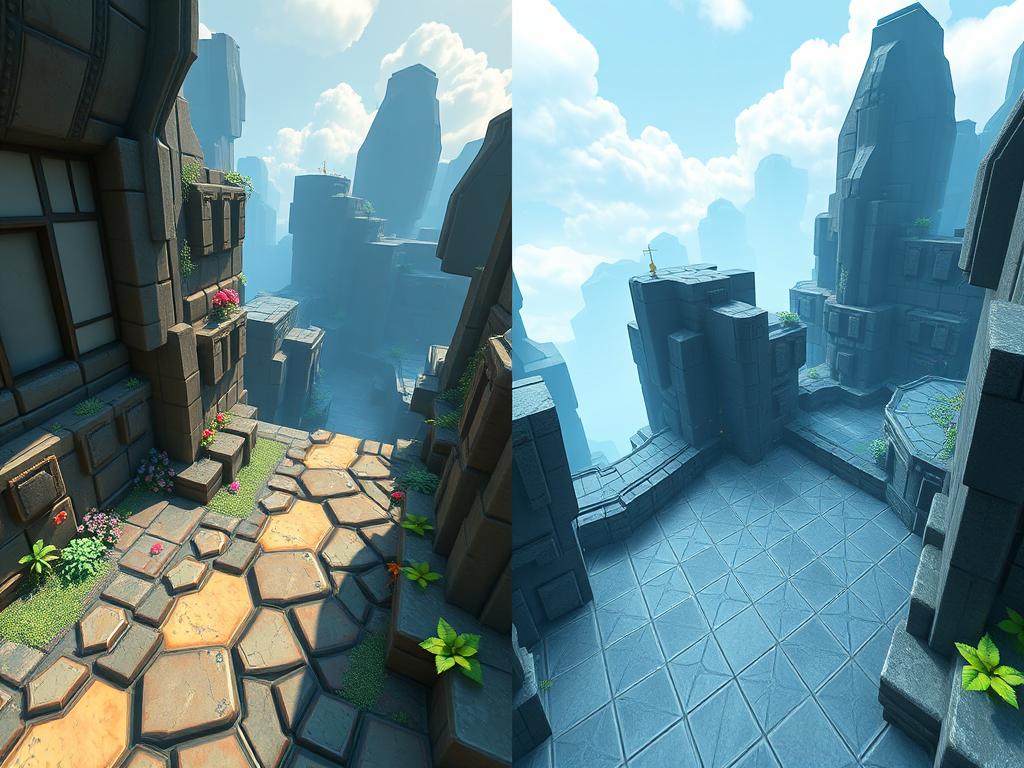
The debate between human and AI-designed game levels centers on a fundamental question: Can mathematical algorithms capture the intangible qualities that make a game level memorable?
Human-Designed Levels
- Intentional narrative pacing and emotional arcs
- Intuitive understanding of player psychology
- Creative surprises and subversions of expectations
- Cultural references and artistic expression
- Handcrafted “signature moments” that become iconic
AI-Generated Levels
- Consistent quality across massive content volumes
- Perfect mathematical balance of challenge
- Rapid iteration and production speed
- Novel combinations human designers might not consider
- Adaptability to individual player data and preferences
Case Study: Minecraft’s Terrain Generation
Minecraft represents one of the most successful implementations of procedural generation in gaming history. Its world generation algorithm creates virtually infinite, varied landscapes that serve as a canvas for player creativity.
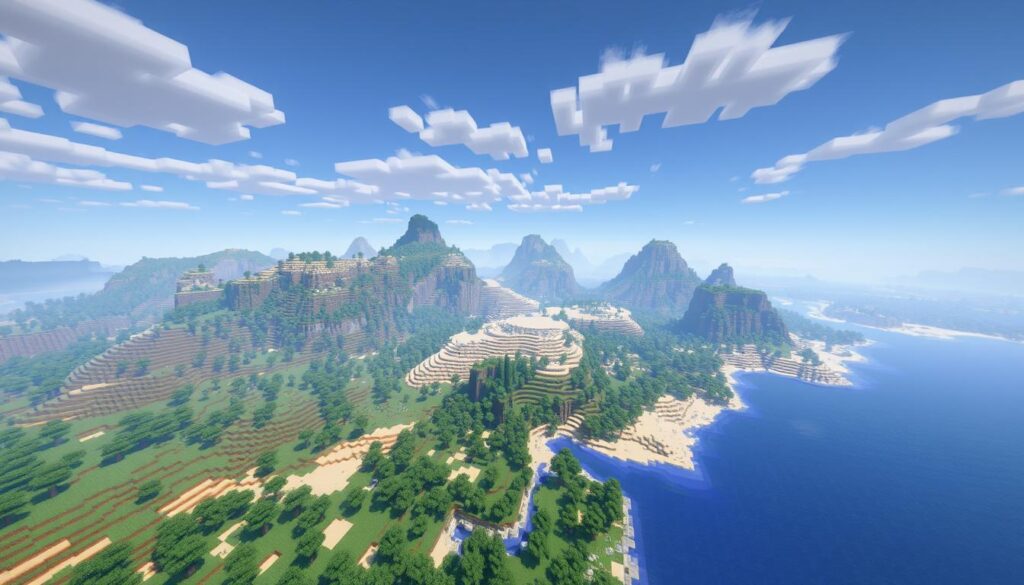
While Minecraft’s terrain is algorithmically generated, the game’s designers carefully crafted the rules governing this generation. The result is a perfect symbiosis: AI handles the heavy lifting of creating vast worlds, while human designers establish the parameters that ensure these worlds feel cohesive and interesting.
Case Study: No Man’s Sky’s Procedural Universe
Hello Games’ No Man’s Sky pushed procedural generation to new extremes, creating an entire universe of planets, creatures, and ecosystems. The game’s initial release highlighted both the strengths and limitations of AI-driven design.
“The problem wasn’t that our procedural generation wasn’t working… it was that we needed to design within its constraints and understand its capabilities.”
No Man’s Sky’s evolution demonstrates an important lesson: AI tools are most effective when human designers understand their capabilities and limitations, working with them rather than expecting them to replace human creativity entirely.
The Uncanny Valley of Level Design: AI Success Stories and Failures
Success: Rogue Legacy
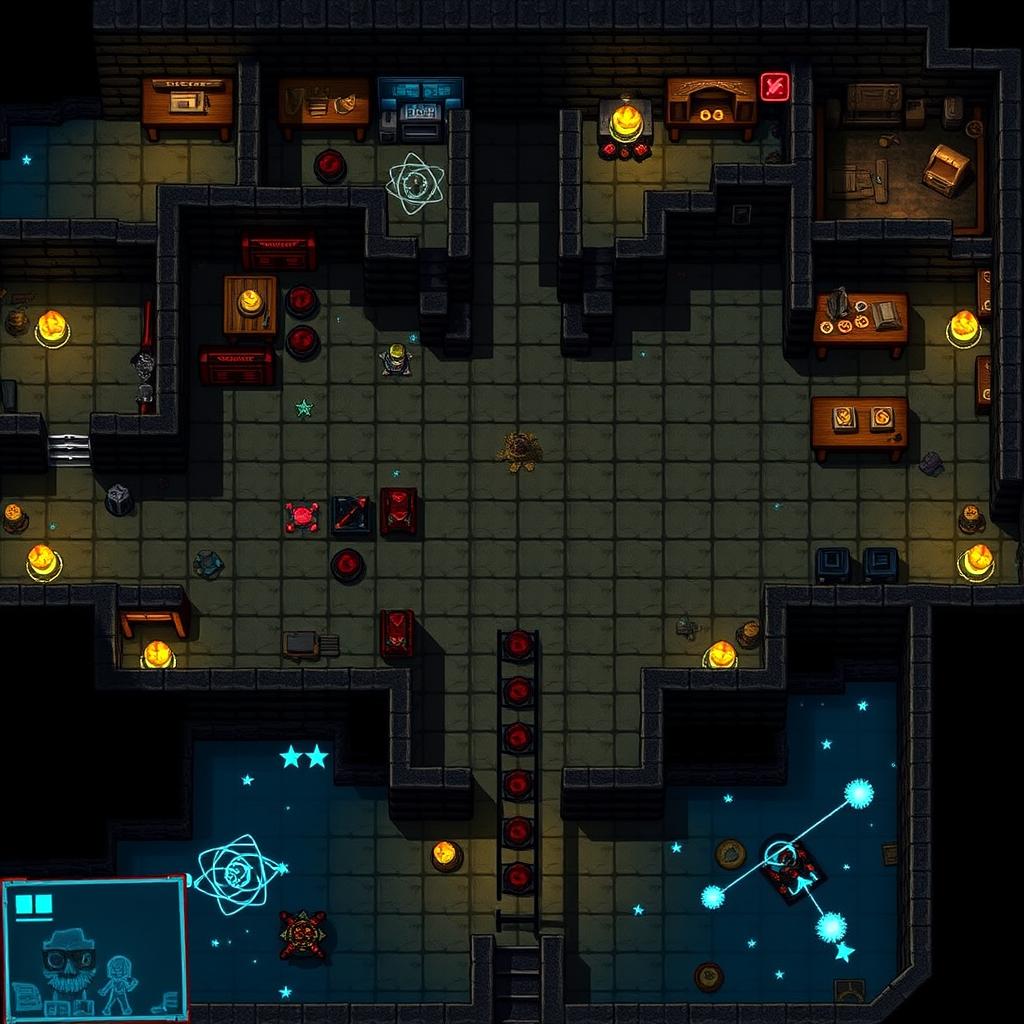
Cellar Door Games’ Rogue Legacy uses procedural generation to create unique castle layouts for each playthrough. The system successfully balances randomness with careful constraints to ensure levels remain playable and challenging.
Mixed Results: Spelunky
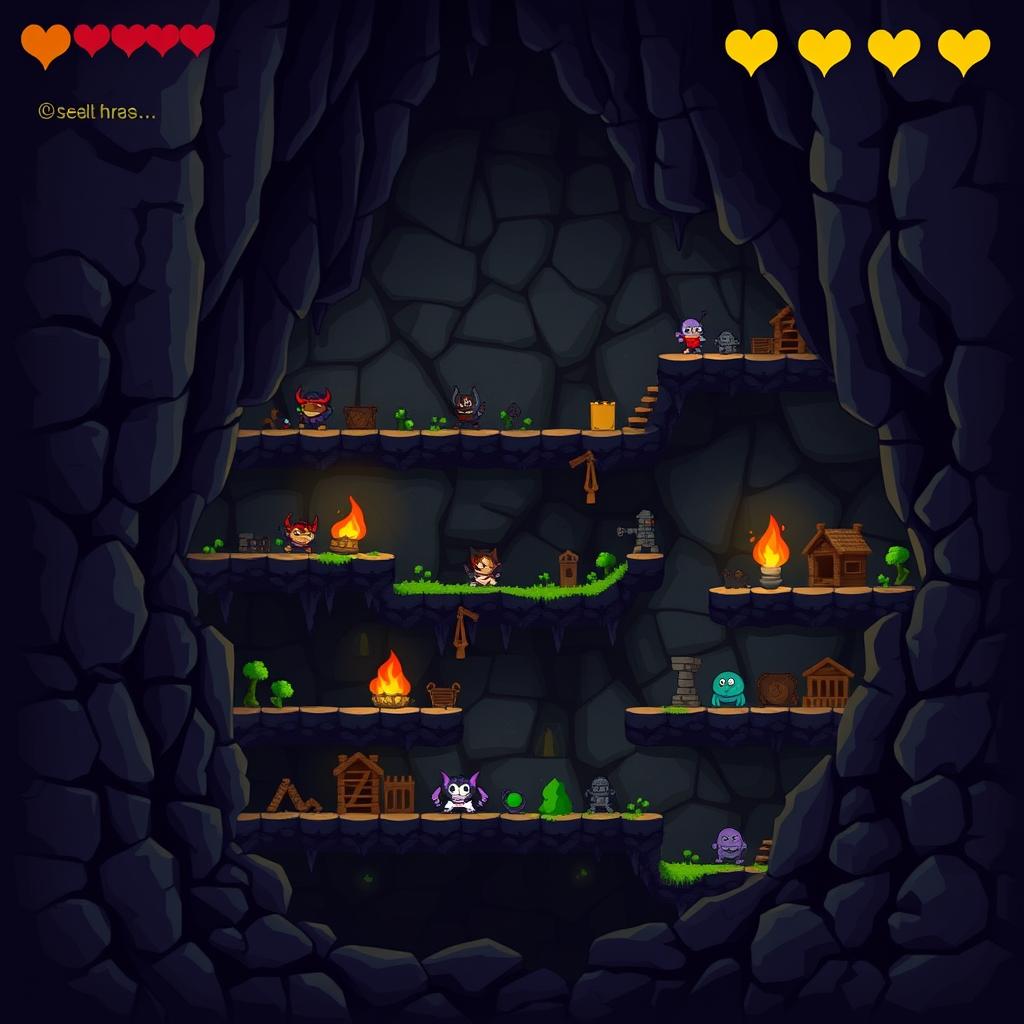
Derek Yu’s Spelunky creates challenging cave systems that feel hand-designed despite being procedurally generated. The game occasionally produces nearly impossible scenarios, but these rare occurrences add to its unpredictable charm.
Failure: Early No Man’s Sky

At launch, No Man’s Sky demonstrated the limitations of pure procedural generation, with players encountering repetitive environments despite the quintillions of planets. This highlighted the need for human curation alongside AI generation.
Key Insight: The Hybrid Approach
The most successful implementations of AI in level design don’t replace human designers—they augment them. By handling repetitive tasks and generating initial layouts, AI tools free human designers to focus on refinement, narrative integration, and signature moments.
“AI doesn’t replace the designer; it gives them superpowers. It’s like having an army of assistants who can rapidly prototype ideas that the designer can then curate and refine.”
The Double-Edged Sword: Pros and Cons of AI Game Design
| Aspect | Advantages | Challenges |
| Development Speed | Dramatically reduces production time for large environments | Initial setup and parameter tuning can be time-consuming |
| Content Volume | Enables creation of vast worlds impossible to hand-craft | Can lead to content that feels repetitive or lacks purpose |
| Resource Allocation | Frees human designers for high-value creative work | Requires technical expertise that smaller studios may lack |
| Player Experience | Can create unique experiences for each player | Difficulty ensuring consistent quality and difficulty curve |
| Replayability | Endless variation encourages multiple playthroughs | Variations may feel superficial rather than meaningfully different |
The integration of AI into game design processes offers tremendous potential but requires careful consideration. Studios must weigh these advantages and challenges against their specific project needs, team capabilities, and design goals.
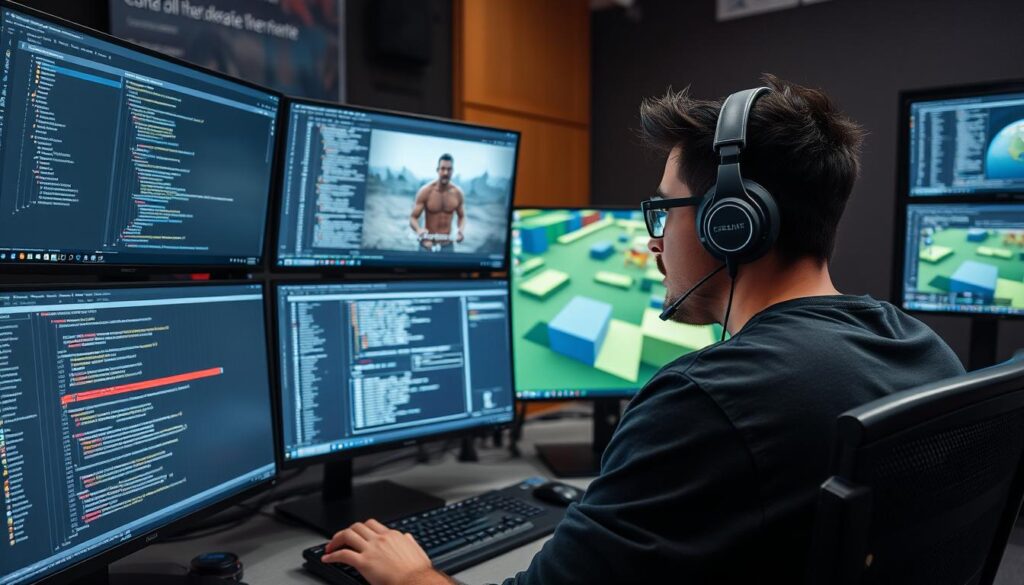
Developer Insight
According to a 2023 survey of game developers, 68% reported using some form of AI or procedural generation in their development process, but only 12% relied on these tools without significant human oversight and refinement.
The Future of AI Game Design: Collaboration, Not Replacement
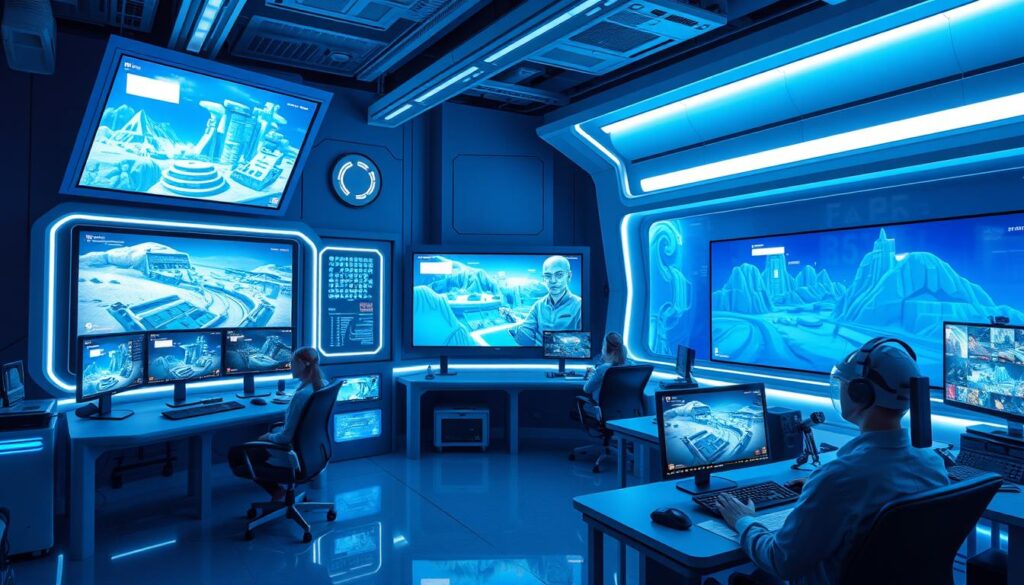
As AI technologies continue to advance, the relationship between human designers and their algorithmic counterparts will evolve. The most likely future isn’t one where AI replaces human creativity, but rather one where the boundaries between human and machine contributions become increasingly blurred.
Emerging Trends in AI Game Design
Player-Adaptive Content
Future AI systems will analyze player behavior in real-time, dynamically adjusting level difficulty, pacing, and even narrative elements to match individual preferences and skill levels.
Creative Collaboration
AI tools will evolve from simple generators to creative partners, suggesting design alternatives, identifying potential issues, and even explaining the reasoning behind their suggestions.
Democratized Development
As AI tools become more accessible, the barriers to game creation will lower, enabling more diverse voices to contribute to the medium without requiring extensive technical expertise.
“The future of game design isn’t human versus machine, but human with machine. The most powerful creative force will be the synergy between human imagination and AI capabilities.”
The most promising direction for AI game design lies in tools that enhance human creativity rather than replace it. By handling technical challenges and generating options, AI can free human designers to focus on the aspects of game creation that require emotional intelligence, cultural awareness, and artistic vision.
Conclusion: The Human Touch in an AI World
So, can artificial intelligence build a better level than you? The answer is nuanced. AI can certainly build levels faster, in greater quantities, and with mathematical precision that humans might struggle to match. However, the most memorable game experiences still benefit from human insight, emotional intelligence, and creative vision.
The future of AI game design isn’t about replacement but augmentation. By embracing AI tools as collaborators rather than competitors, game developers can create experiences that combine the efficiency and scale of algorithmic generation with the heart and soul of human creativity.
As these technologies continue to evolve, the distinction between human-designed and AI-generated content will likely become less relevant. What will matter most is the quality of the player experience—regardless of whether it was crafted by human hands, algorithmic processes, or most likely, a thoughtful combination of both.
Ready to Explore AI Game Design?
Whether you’re a professional developer or an aspiring game creator, AI tools can help bring your vision to life. Start experimenting with accessible platforms that combine human creativity with AI assistance.
Try Ludo.ai for Game Concept Generation
Explore Workik’s AI Development Tools
Do I need programming experience to use AI game design tools?
Many modern AI game design platforms are specifically designed to be accessible to non-programmers. Tools like Ludo.ai and Upit focus on intuitive interfaces that allow creators to generate game concepts, assets, and even code through natural language prompts and visual editors.
Will AI eventually replace human game designers completely?
This is highly unlikely. While AI can handle many technical aspects of game creation, human designers bring cultural context, emotional intelligence, and artistic vision that AI currently cannot replicate. The most effective approach is collaboration between human creativity and AI capabilities.
What’s the best way to start learning about AI game design?
Begin by experimenting with accessible tools like Ludo.ai or Unity’s ML-Agents. Many platforms offer free tiers or trials that allow you to explore AI capabilities without significant investment. Online communities and courses focused on procedural generation and game AI are also valuable resources for beginners.







